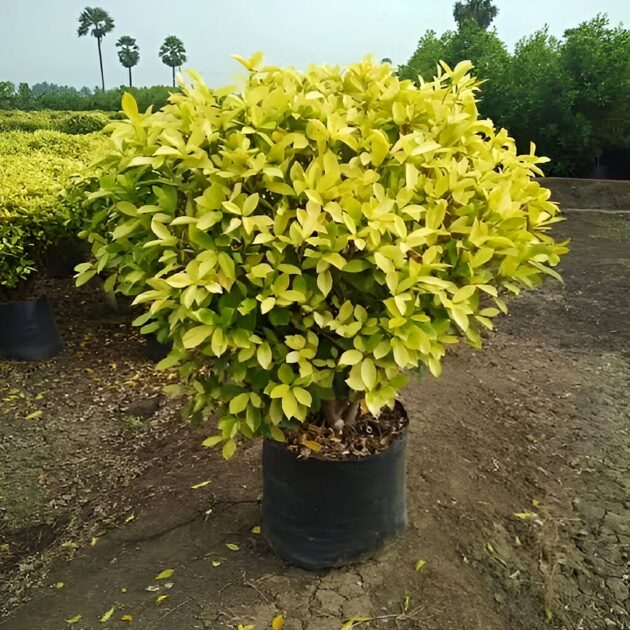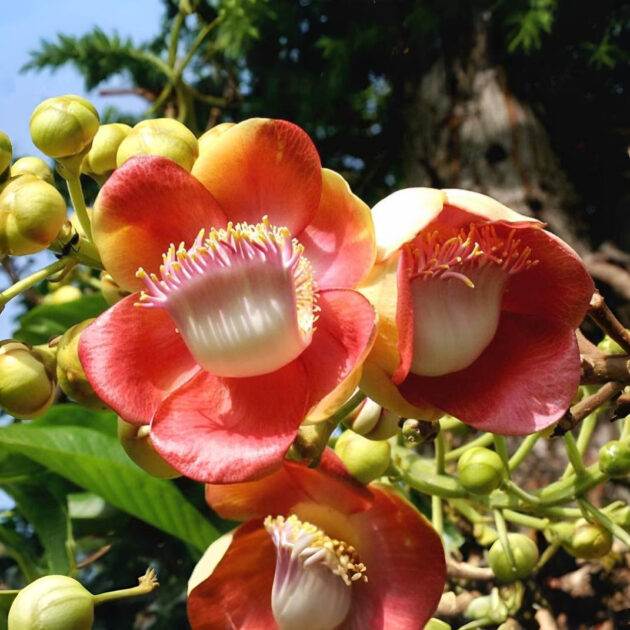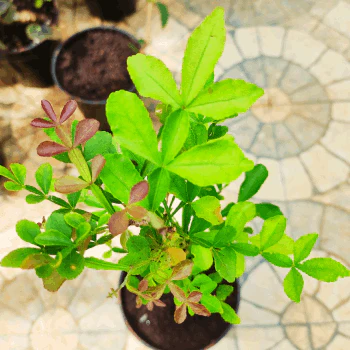

maha vilvam plant
₹329.00 Original price was: ₹329.00.₹249.00Current price is: ₹249.00.
Details:
Maha Vilvam, also known as the Bael tree or Aegle marmelos, is a sacred tree with a unique leaf structure, often featuring 9-13 leaflets instead of the typical 3, and is known for its medicinal and spiritual significance.
Description
The Maha Vilvam plant, also known as Bael (Aegle marmelos), is a tropical and subtropical tree that holds religious and medicinal significance in many parts of India and Southeast Asia. It is especially revered in Hinduism, where its leaves are used in worshiping Lord Shiva.
Plant Description:
- Scientific Name: Aegle marmelos
- Common Names: Maha Vilvam, Bael, Bel, Bilva, Wood Apple
- Family: Rutaceae
Appearance:
- Size: The Maha Vilvam is a medium-sized tree that can grow up to 10–15 meters tall.
- Leaves: The leaves of the Maha Vilvam are trifoliate (having three leaflets), and they have a distinct aroma. The leaflets are oblong, pointed at the tip, and leathery in texture. The leaves are typically green but may turn yellowish or reddish as they mature.
- Flowers: The tree produces small, fragrant, white or greenish-yellow flowers. These flowers appear in clusters and bloom in the spring or early summer.
- Fruit: The tree bears a distinctive fruit, often referred to as Bael fruit or Wood Apple. The fruit is round or oval, with a hard outer shell that is brownish-gray when ripe. The inside of the fruit contains aromatic, sweet, and tangy pulp, which is orange in color and contains numerous seeds.
- Bark: The bark of the Maha Vilvam tree is rough and grayish-brown, often covered in small thorns.
Habitat:
- The Maha Vilvam plant is native to the Indian subcontinent but is also found in other parts of Southeast Asia. It thrives in tropical and subtropical climates and can tolerate hot, dry conditions. It prefers well-drained, sandy, or loamy soils and is often found in forests, along roadsides, and in cultivated fields.
Medicinal Uses:
The Maha Vilvam tree is highly regarded for its medicinal properties, especially in Ayurvedic medicine. Various parts of the plant, including the leaves, fruit, and bark, are used for treating a range of ailments:
- Bael fruit is used to treat digestive issues, such as diarrhea, dysentery, and constipation. It is also used to improve appetite and as a remedy for heatstroke.
- Maha Vilvam leaves are considered sacred and are used in religious rituals. They are also believed to have antibacterial, anti-inflammatory, and antipyretic properties.
- The fruit is rich in vitamins, antioxidants, and minerals, making it beneficial for overall health, including improving skin health and boosting immunity.
Religious Significance:
- In Hinduism, the Maha Vilvam tree holds a special place, especially in the worship of Lord Shiva. The leaves of the tree are considered sacred, and they are often used in offerings during prayers and ceremonies, particularly on Shivaratri (a festival dedicated to Lord Shiva).
- The trifoliate leaves symbolize the three aspects of Lord Shiva: creation, preservation, and destruction, making the plant a symbol of divine power.
Other Uses:
- Fruit: The pulp of the Bael fruit is often consumed as a refreshing beverage or used in jams, jellies, and sweets. The fruit is also used in making medicinal syrups and powders.
- Wood: The wood of the Maha Vilvam tree is strong and durable and is sometimes used in making tools, furniture, and religious artifacts.
Care and Cultivation:
- Sunlight: The tree thrives in full sunlight, making it suitable for open spaces or orchards.
- Watering: While the tree can tolerate dry conditions, it benefits from moderate watering, especially during the initial stages of growth.
- Soil: Maha Vilvam grows well in well-drained soils and can tolerate a range of soil types, including poor soils.
- Pruning: Regular pruning is necessary to maintain the shape of the tree and remove any dead or damaged branches.
Let me know if you’d like more details or have any specific questions about this fascinating plant!



Reviews
Clear filtersThere are no reviews yet.